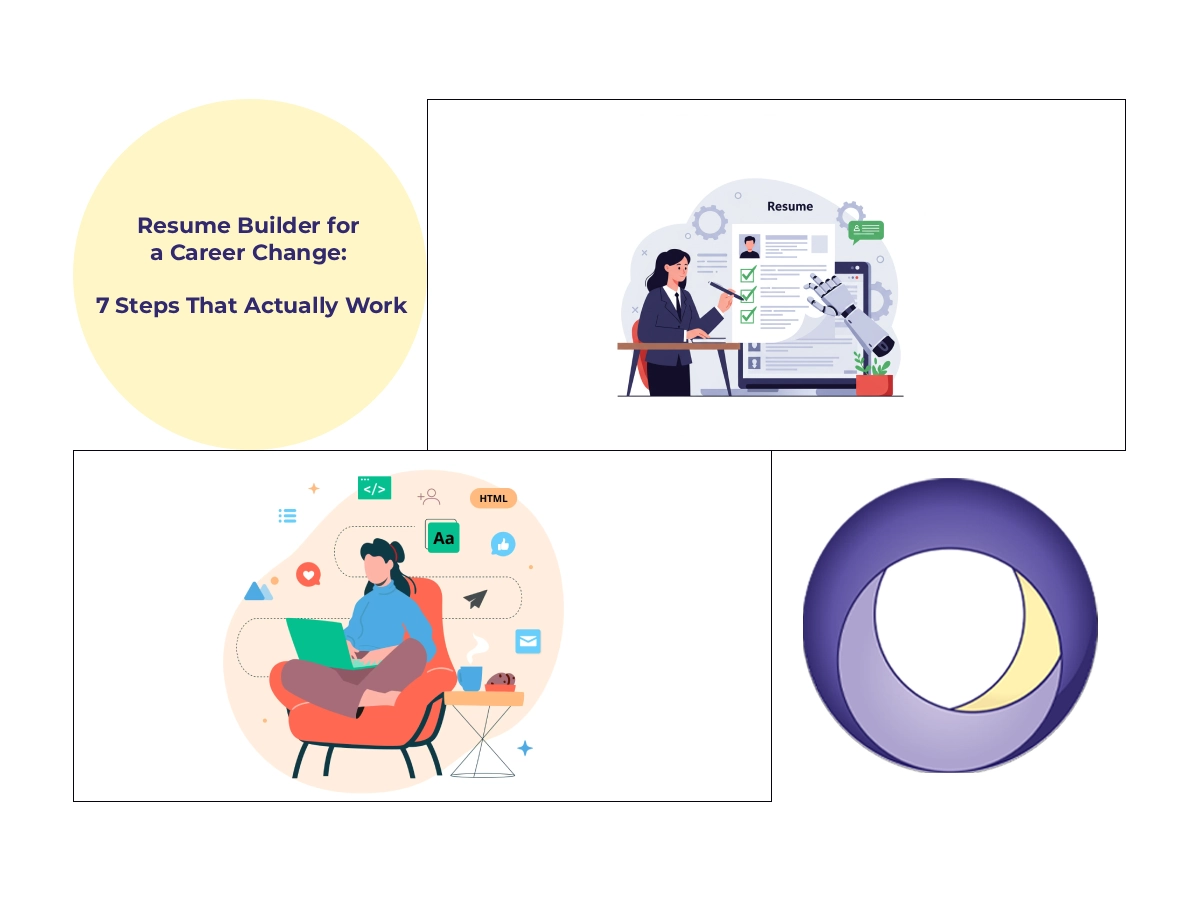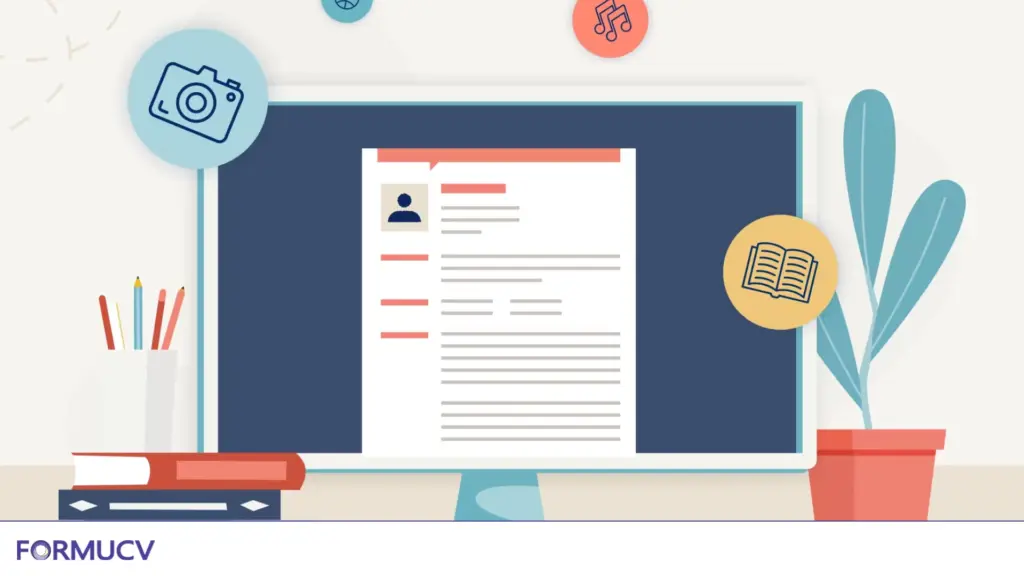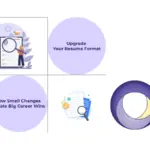
Resume Builder for a Career Change: 7 Steps That Actually Work
Changing careers can feel like starting over. You’ve got experience, maybe even years of it, but it’s not always clear how to translate your past roles into your next chapter. That’s where a resume builder for a career change becomes your best ally.
Table Of Content
- Resume Builder for a Career Change: The Real Challenge of a Career Switch
- Resume Builder for a Career Change: Step by Step
- Step 1: Start With Clarity, Define Your New Direction
- Step 2: Import and Reframe Your Experience
- Step 3: Let AI Suggest Action-Driven Language
- Step 4: Match Your Resume to Job Descriptions
- Step 5: Choose Templates That Employers Actually Read
- Step 6: Personalise with a Professional Summary
- Step 7: Save, Customise, and Reuse Effortlessly
- Why a Resume Builder Beats Starting From Scratch
- A Real Example: From Sales to Product Management
- How FormuCV Supports Career Changers
- The Human Side of Every Career Change
- Final Takeaway
Whether you’re moving from engineering to data analysis or teaching to tech, the right tools can help you tell your story with clarity and confidence, without starting from a blank page.
Resume Builder for a Career Change: The Real Challenge of a Career Switch
Most people underestimate how different career-change resumes are from standard ones.
Traditional resumes emphasise continuity, staying in one field, and moving up the ladder. But a career-change resume is all about connection: connecting what you’ve done to where you’re going.

That’s hard to do when:
- Job descriptions ask for skills you haven’t used recently.
- Employers use automated filters (ATS) that miss context (see tips in Formucv LinkedIn).
- You’re not sure which past achievements are still relevant.
Resume Builder for a Career Change: Step by Step
A resume builder for a career change solves this problem by guiding you step by step and automatically showing how to emphasise transferable skills and adapt your resume to new job descriptions.
Step 1: Start With Clarity, Define Your New Direction
Before opening any resume tool, take ten quiet minutes to answer one question: What’s the exact role or field I’m moving into?
You don’t have to know the job title perfectly, but you do need a target. Tools like FormuCV, explicitly built for modern job seekers, let you paste job descriptions to see how well your profile fits. That instant feedback helps you narrow your focus before you even start writing.
This clarity saves hours of rewriting later and keeps your messaging consistent.
Step 2: Import and Reframe Your Experience
The most competent resume builders, like FormuCV’s AI-powered parser, can pull key details from your old resume, positions, dates, achievements, and reorganise them.
This step is gold for career changers. Instead of deleting half your past, the builder helps you reframe it:
- “Managed classroom operations for 25 students” becomes “Led cross-functional teams in high-pressure environments.”
- “Planned weekly lessons” can turn into “Designed structured learning programs, transferable to training and onboarding roles.”
Good builders highlight the skills beneath the surface, not just the job titles.
Step 3: Let AI Suggest Action-Driven Language
If you’ve been in one field for years, your vocabulary is shaped by it. That can hurt when you’re applying elsewhere. Employers in marketing or tech, for example, scan for action verbs and measurable results, not industry jargon.
A resume builder for a career change that uses AI, like FormuCV, can automatically recommend strong, cross-industry phrasing, such as ‘implemented’, ‘analysed’, ‘improved’, and ‘launched’.
This subtle language shift signals adaptability. It shows hiring managers that you think in outcomes, not just responsibilities.
Step 4: Match Your Resume to Job Descriptions
This is where AI can make all the difference. Traditional editing means guessing what employers want. But an innovative resume builder for a career change lets you paste in the actual job listing.
FormuCV’s Job Match Scoring feature instantly compares your resume with that description, showing a percentage score and which keywords are missing.
That feedback is immediate and actionable. You can tweak skills, adjust phrasing, and recheck the score, all within minutes.
Why this matters:
Hiring managers spend an average of 6–8 seconds scanning each resume. You want to make every second count by aligning with what they’re already looking for.
Step 5: Choose Templates That Employers Actually Read
Here’s a common mistake: career changers often over-design their resumes. Fancy fonts or graphics can backfire because many ATS (Applicant Tracking Systems) can’t read them.
Stick to employer-approved templates. The best ones, like those on FormuCV, are clean, modern, and ATS-compatible.
A polished but simple layout helps your content speak louder than the format. It also ensures that when your resume passes through screening software, every keyword and phrase is captured correctly.
Step 6: Personalise with a Professional Summary
Your summary isn’t just an intro; it’s your bridge between past and future.
Instead of summarising your work history (“Marketing manager with 10 years of experience…”), use 3–4 lines to connect your background to your next goal.
Example:
“Former educator turned UX designer, combining a decade of communication skills with a strong eye for user experience. Passionate about translating complex information into intuitive digital experiences.”
A good AI resume builder can help you draft and refine this section. But don’t skip the human touch; make sure it sounds like you.
Step 7: Save, Customise, and Reuse Effortlessly
Changing careers often means applying to multiple roles while you’re still figuring out the right fit. That’s where the cloud-based flexibility of modern resume builders shines.
You can create multiple versions of your resume —one focused on project management, another on leadership, or another on communication. FormuCV’s dashboard, for instance, keeps all your drafts saved securely so that you can tweak and export new PDFs in seconds.
Why a Resume Builder Beats Starting From Scratch
Sure, you could build a resume in Word or Google Docs. But you’d miss out on the data-driven insights that modern tools bring.

The best resume builders for a career change combine technology and psychology:
- Technology for parsing, matching, and layout.
- Psychology for presenting your story in a way that makes sense to hiring managers.
When these two work together, you don’t just end up with a prettier document; you get a resume that’s more likely to open doors.
A Real Example: From Sales to Product Management
Sarah, 31, spent nearly a decade in retail sales. She wanted to move into tech but didn’t know how to position herself.
Using FormuCV, she uploaded her old resume. The AI parsed her achievements and suggested framing her customer-facing experience as “stakeholder management” and “user insight gathering.” Her job match score for “Junior Product Manager” jumped from 48% to 82% after three rounds of edits.
Two weeks later, she landed her first interview.
Her story isn’t unique; it’s what happens when technology helps translate experience rather than replace it.
How FormuCV Supports Career Changers
FormuCV was built for genuine job seekers across MENA and beyond, especially those at crossroads. Its AI-powered enhancement and Job Matching features make it a practical choice for anyone navigating a career shift.
Here’s what stands out:
- Innovative AI Suggestions: Helps you rewrite old experiences in a new professional voice.
- Instant Job Match Scoring: Identifies gaps before employers do.
- ATS-Ready Templates: Designed by HR professionals to pass screening filters.
- Arabic and English Support: Ideal for bilingual candidates in the MENA job market.
- Instant PDF Download: What you see is what you get, no surprises, no hidden costs.
For many career changers, that combination means less frustration, faster applications, and better results.
The Human Side of Every Career Change
No resume builder, however advanced, replaces your story. It just helps you tell it better.
Career changes are rarely linear. They come from curiosity, burnout, relocation, or even necessity. But your skills, instincts, and achievements remain valuable; they need to be reframed for a new audience.

A good resume builder for a career change gives you the structure and support to make that reframing easier, so you can focus on the bigger picture: where you’re headed next.
Final Takeaway
If you’re standing at a professional crossroads, don’t let the resume hurdle hold you back. Use technology that understands both you and your next step.
Tools like FormuCV combine AI intelligence with employer insight to create resumes that bridge your past and future, without confusion, without hidden costs, and without losing your voice in the process.
Because a career change isn’t about starting over, it’s about moving forward, with clarity, confidence, and a resume that finally tells your real story.

